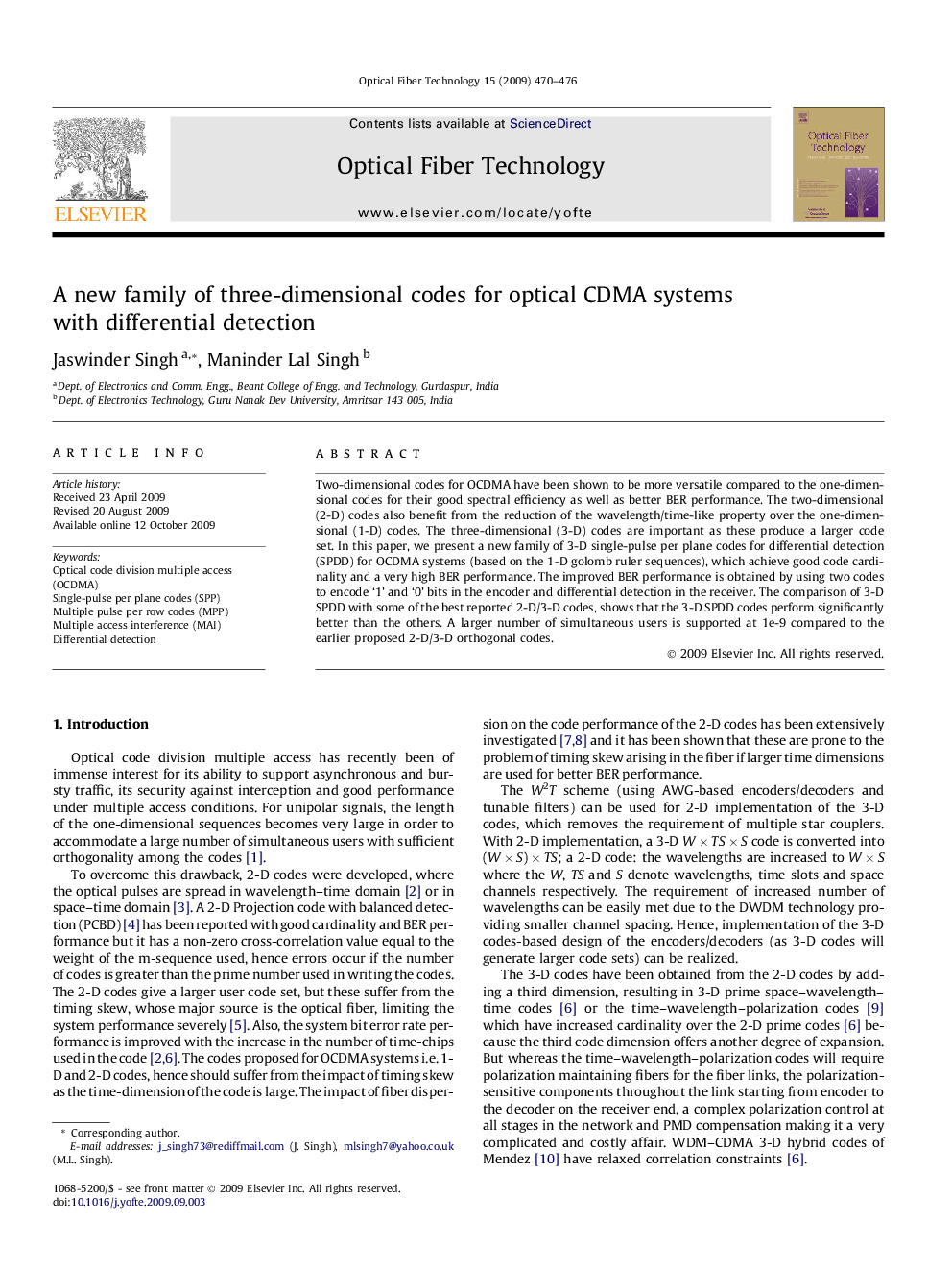| Article ID | Journal | Published Year | Pages | File Type |
|---|---|---|---|---|
| 463898 | Optical Fiber Technology | 2009 | 7 Pages |
Two-dimensional codes for OCDMA have been shown to be more versatile compared to the one-dimensional codes for their good spectral efficiency as well as better BER performance. The two-dimensional (2-D) codes also benefit from the reduction of the wavelength/time-like property over the one-dimensional (1-D) codes. The three-dimensional (3-D) codes are important as these produce a larger code set. In this paper, we present a new family of 3-D single-pulse per plane codes for differential detection (SPDD) for OCDMA systems (based on the 1-D golomb ruler sequences), which achieve good code cardinality and a very high BER performance. The improved BER performance is obtained by using two codes to encode ‘1’ and ‘0’ bits in the encoder and differential detection in the receiver. The comparison of 3-D SPDD with some of the best reported 2-D/3-D codes, shows that the 3-D SPDD codes perform significantly better than the others. A larger number of simultaneous users is supported at 1e-9 compared to the earlier proposed 2-D/3-D orthogonal codes.
